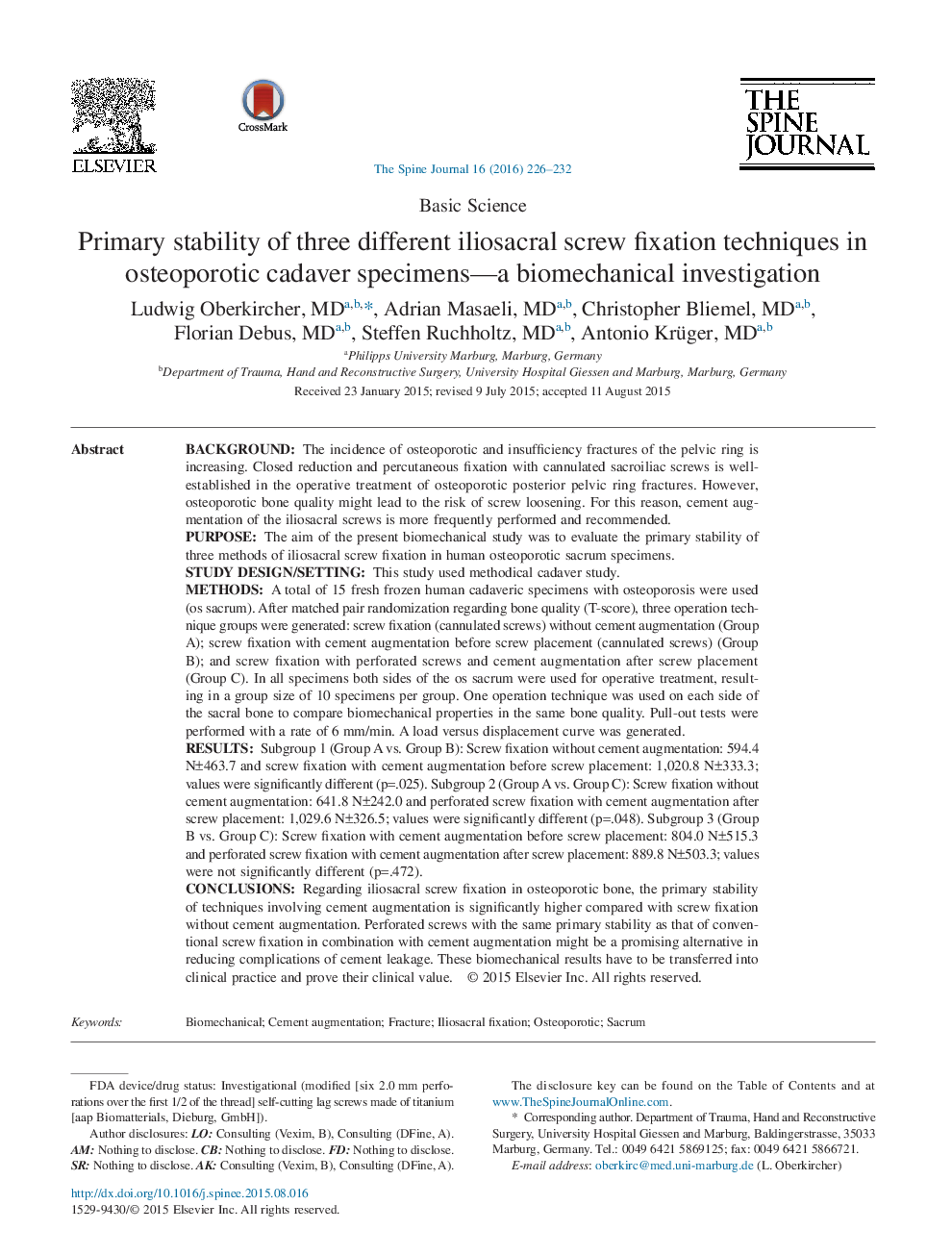| کد مقاله | کد نشریه | سال انتشار | مقاله انگلیسی | نسخه تمام متن |
|---|---|---|---|---|
| 6211621 | 1268554 | 2016 | 7 صفحه PDF | دانلود رایگان |

BackgroundThe incidence of osteoporotic and insufficiency fractures of the pelvic ring is increasing. Closed reduction and percutaneous fixation with cannulated sacroiliac screws is well-established in the operative treatment of osteoporotic posterior pelvic ring fractures. However, osteoporotic bone quality might lead to the risk of screw loosening. For this reason, cement augmentation of the iliosacral screws is more frequently performed and recommended.PurposeThe aim of the present biomechanical study was to evaluate the primary stability of three methods of iliosacral screw fixation in human osteoporotic sacrum specimens.Study Design/SettingThis study used methodical cadaver study.MethodsA total of 15 fresh frozen human cadaveric specimens with osteoporosis were used (os sacrum). After matched pair randomization regarding bone quality (T-score), three operation technique groups were generated: screw fixation (cannulated screws) without cement augmentation (Group A); screw fixation with cement augmentation before screw placement (cannulated screws) (Group B); and screw fixation with perforated screws and cement augmentation after screw placement (Group C). In all specimens both sides of the os sacrum were used for operative treatment, resulting in a group size of 10 specimens per group. One operation technique was used on each side of the sacral bone to compare biomechanical properties in the same bone quality. Pull-out tests were performed with a rate of 6âmm/min. A load versus displacement curve was generated.ResultsSubgroup 1 (Group A vs. Group B): Screw fixation without cement augmentation: 594.4 N±463.7 and screw fixation with cement augmentation before screw placement: 1,020.8 N±333.3; values were significantly different (p=.025). Subgroup 2 (Group A vs. Group C): Screw fixation without cement augmentation: 641.8 N±242.0 and perforated screw fixation with cement augmentation after screw placement: 1,029.6 N±326.5; values were significantly different (p=.048). Subgroup 3 (Group B vs. Group C): Screw fixation with cement augmentation before screw placement: 804.0 N±515.3 and perforated screw fixation with cement augmentation after screw placement: 889.8 N±503.3; values were not significantly different (p=.472).ConclusionsRegarding iliosacral screw fixation in osteoporotic bone, the primary stability of techniques involving cement augmentation is significantly higher compared with screw fixation without cement augmentation. Perforated screws with the same primary stability as that of conventional screw fixation in combination with cement augmentation might be a promising alternative in reducing complications of cement leakage. These biomechanical results have to be transferred into clinical practice and prove their clinical value.
Journal: The Spine Journal - Volume 16, Issue 2, February 2016, Pages 226-232